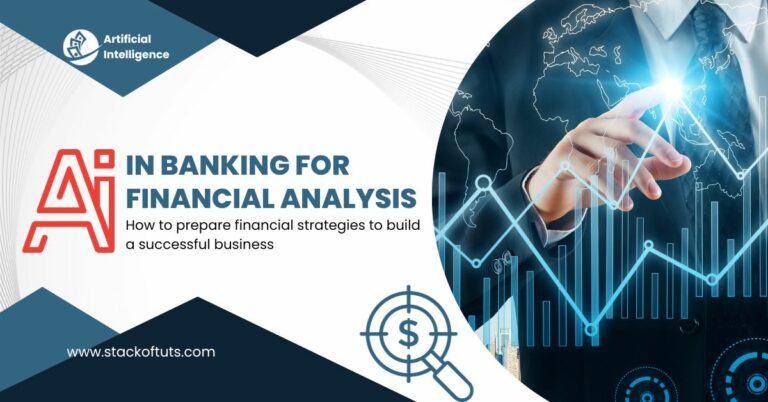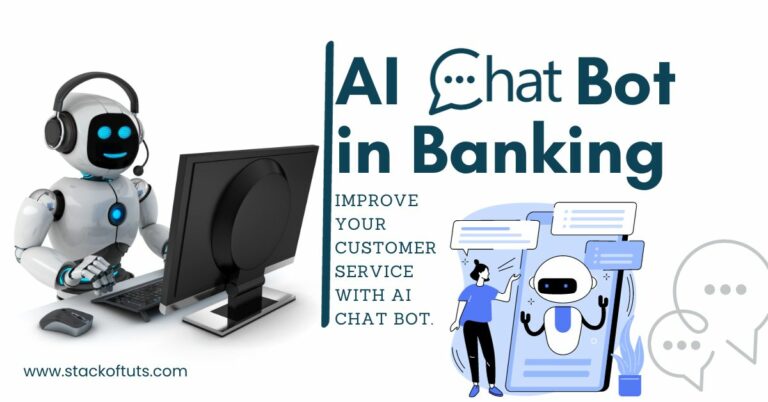
The banking sector stands on the cusp of a revolutionary transformation, driven by the rapid advancements in Artificial Intelligence (AI). As we delve into this dynamic era, it’s crucial to understand the multifaceted Impact Of AI In Banking – a sector that not only drives economic growth but also profoundly affects everyday financial transactions.
Read about: Artificial Intelligence in Banking Operations for a full guide.
Revolutionizing Customer Experience through AI
AI is redefining the customer experience in banking. Gone are the days of long queues and tedious processes. Today, AI-powered chatbots provide instant customer service, answering queries and offering solutions around the clock. These intelligent systems learn from customer interactions, continuously improving their ability to address complex issues and personalize responses. The result is a more engaged, satisfied customer base.
Enhanced Security and Fraud Detection
Security is paramount in banking, and AI is playing a pivotal role in fortifying it. AI algorithms are capable of detecting anomalies and patterns indicative of fraudulent activities. By analyzing vast amounts of transaction data in real-time, AI systems can identify and flag suspicious activities, significantly reducing the risk of financial fraud. This proactive approach to security is vital in an era where digital transactions are skyrocketing.
Streamlining Operations with AI
Operational efficiency is a cornerstone of successful banking, and AI is key in optimizing these operations. From automating routine tasks to managing complex data sets, AI enables banks to operate more efficiently. This automation not only reduces operational costs but also minimizes human error, ensuring a higher accuracy level in banking operations.
AI in Credit Decision Making
Credit decision-making has been transformed by AI. Traditional credit scoring methods are being supplemented by AI-driven models that analyze a broader range of data, including non-traditional sources. This provides a more comprehensive view of a borrower’s creditworthiness, enabling more accurate and fair lending decisions. It opens doors for those who might have been underserved by traditional credit scoring methods.
Challenges in Adopting AI and ML in Banking
Adopting Artificial Intelligence (AI) and Machine Learning (ML) in banking brings numerous advantages, yet it also presents several significant challenges. These challenges stem from various factors, including technical complexity, data management, regulatory compliance, and ethical considerations. Let’s explore the Impact Of AI In Banking and challenges in detail.
1. Data Privacy and Security Concerns:
- Sensitive Data Handling: Banks deal with highly sensitive personal and financial data. Implementing AI and ML requires access to vast amounts of this data, raising concerns about privacy breaches.
- Cybersecurity Risks: As banks integrate AI and ML, they become more vulnerable to sophisticated cyber-attacks. Ensuring robust cybersecurity measures is crucial but challenging.
2. Regulatory Compliance and Ethical Issues:
- Adherence to Regulations: The banking sector is heavily regulated. AI and ML applications must comply with existing regulations, which can be a complex process given the dynamic nature of these technologies.
- Bias and Fairness: AI and ML systems can inadvertently perpetuate biases present in their training data. Ensuring these systems are fair and unbiased is a significant challenge, particularly in areas like credit scoring.
3. Integration with Existing Systems:
- Legacy Systems: Many banks operate on legacy systems that are not readily compatible with the latest AI and ML technologies. Upgrading these systems can be costly and time-consuming.
- Interoperability Issues: Ensuring new AI and ML solutions work seamlessly with existing banking systems and processes can be technically challenging.
4. Technical Challenges and Resource Constraints:
- Complexity of AI Models: Developing, training, and maintaining AI and ML models require specialized knowledge and expertise, which can be a resource constraint for many banks.
- Data Quality and Management: AI and ML systems need high-quality, well-managed data to function effectively. Ensuring data quality and effective data management is often a hurdle.
5. Skill Gap and Training Needs:
- Workforce Transformation: There is a significant skill gap in the banking workforce regarding AI and ML. Training existing staff and attracting new talent with the necessary skills is a challenge.
- Change Management: Implementing AI and ML in banking involves significant changes in operational processes. Managing this change effectively, including employee training and adaptation, is essential but difficult.
6. Scalability and Cost Issues:
- High Initial Investment: The cost of implementing AI and ML solutions, including infrastructure and talent acquisition, can be prohibitively high for some banks.
- Scalability Concerns: As banks grow, their AI and ML systems need to scale accordingly, which can be challenging both technically and financially.
7. Customer Trust and Acceptance:
- Reluctance to Adopt New Technologies: Some customers may be hesitant to engage with AI-driven services due to a lack of understanding or trust in these technologies.
- Personalization vs. Privacy: While AI can offer personalized banking experiences, balancing personalization with privacy concerns is a delicate task.
The Future of AI in Banking
The future of banking with AI looks promising. As AI technologies continue to evolve, we can expect even more innovative applications. Personalized financial advice, improved risk management, and further advancements in fraud detection are just the tip of the iceberg.
Conclusion
The Impact Of AI In Banking is profound, offering a blend of opportunities and challenges. As banks navigate this AI-driven landscape, the focus must remain on harnessing AI’s potential responsibly and ethically, ensuring that it benefits both the industry and its customers.
Thanks!





